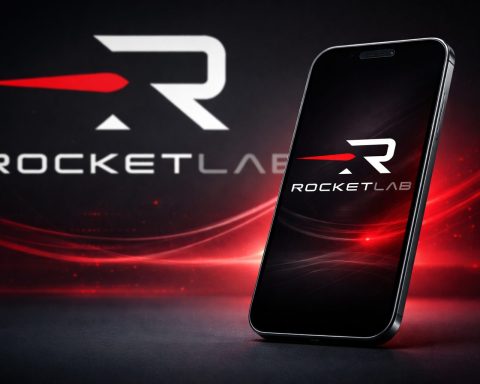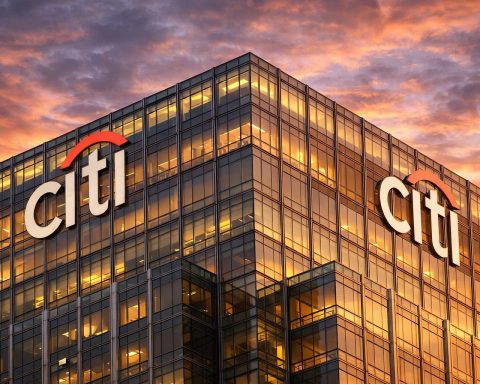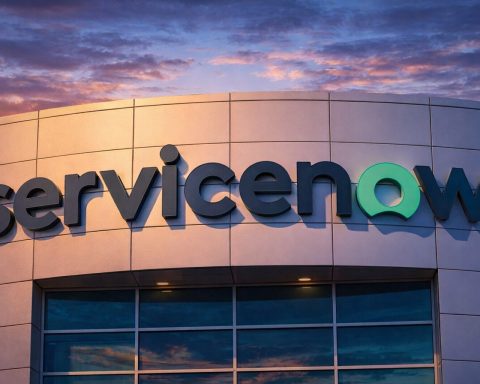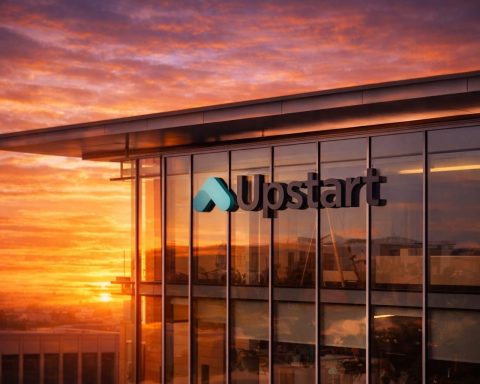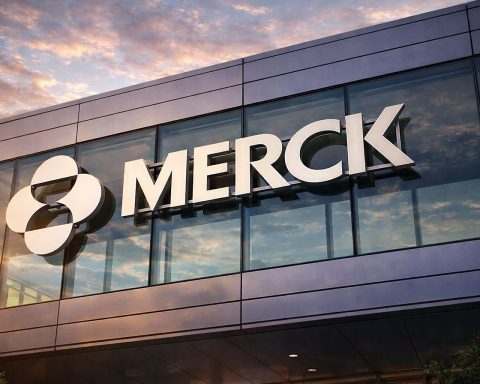Smartphones & Gadgets: Pixel Teasers and iPhone Rumors
- Google’s Pixel Event Hypes New Devices: Google confirmed it will launch the Pixel 10 smartphone lineup – alongside a Pixel Watch 4 and new Pixel Buds – at a splashy New York event on August 20 [1]. Teaser clips hinted at next-gen photo editing tricks, like adding people into images after the shot and extreme zoom capabilities, suggesting the Pixel 10 will expand on the camera magic of its predecessors [2]. Google is even bringing out celebrity guests (from talk-show host Jimmy Fallon to NBA star Steph Curry) to celebrate “10 generations of Pixel” at the event [3], underscoring how big a milestone this launch is for the company’s hardware line.
- Apple’s Ultra-Thin iPhone Leak: Not to be outdone, Apple’s upcoming iPhone 17 is making waves in the rumor mill. Leaked dummy units point to an “iPhone 17 Air” model that’s dramatically slimmer than Samsung’s Galaxy S25 Edge – but at a cost. The Air is said to pack only a ~2,900 mAh battery (vs. 3,900 mAh in Samsung’s phone) [4], sparking debate over whether Apple is sacrificing too much battery life for thinness. (Apple’s hope is that improved battery management in iOS will bridge the gap.) Meanwhile, other leaks show iPhone 17 Pro Max might adopt a metal-backed battery for better heat dissipation [5] and a larger camera bump for upgraded sensors [6]. All signs point to Apple aiming for a mix of bold design changes and camera improvements in its September launch, keeping anticipation high.
Cybersecurity: Telecom Ransomware Shock
- Global Telecom Hit by Ransomware: A major cyberattack struck Colt Technology Services, a London-based telecom/network operator serving 40 countries, forcing critical systems offline and disrupting enterprise services across Europe, Asia, and North America [7]. The WarLock ransomware group claimed responsibility, stealing over one million sensitive documents (employee salary data, customer contacts, internal emails) and is demanding a modest $200,000 ransom [8] for the data’s return. Colt’s customer portals and voice platforms remain down as the firm works with law enforcement to contain the breach. Security experts note this alarming attack on core telecom infrastructure highlights the growing risk ransomware poses even to well-resourced network providers [9]. “This attack represents a significant escalation in threats targeting critical telecommunications infrastructure,” one industry report warned, after hackers exploited a recently patched SharePoint server flaw to infiltrate Colt [10] [11].
- WinRAR Flaw Exploited in the Wild: In other cyber news, researchers revealed that a zero-day vulnerability in the popular WinRAR file archive utility (CVE-2025-8088) was being actively exploited by at least two separate threat groups [12]. The bug – disclosed just days ago – allows attackers to execute code via booby-trapped archives. Microsoft also rushed out fixes for a “BadSuccessor” Kerberos authentication flaw in Windows that could allow privilege escalation across networks [13]. The takeaway for users and IT admins: patch now, as criminals are quick to pounce on newly revealed weaknesses.
Space & Aerospace: Record Launches and New Missions
- SpaceX’s 100th Launch of 2025: Elon Musk’s SpaceX hit a historic cadence milestone, launching its 100th Falcon 9 rocket of the year on Monday [14]. The weekend mission from California lofted 24 Starlink internet satellites into orbit – SpaceX’s 72nd Starlink launch in 2025 alone, bringing the year’s total to an astonishing 1,786 satellites deployed [15]. The veteran Falcon 9 booster (on its 9th flight) aimed to land on a droneship, which would mark the 489th successful booster recovery to date if successful [16]. This blistering launch tempo firmly cements SpaceX’s record-breaking pace in the industry.
- Starship Test Flight Scheduled: SpaceX is also gearing up for the next big leap: it officially set August 24 for the long-awaited 10th test flight of its Starship mega-rocket system [17]. This comes after a three-month pause to address earlier test failures and regulatory hurdles. The uncrewed flight will attempt to reach orbit and prove out fixes – a crucial step toward Starship’s goal of carrying cargo and humans to the Moon and Mars.
- Vulcan Rocket Debut: The U.S. Space Force notched a win as United Launch Alliance’s new Vulcan rocket completed its inaugural National Security Space Launch earlier this week [18]. Carrying a military payload, Vulcan’s first operational flight is a “pivotal advancement” for ULA and the Pentagon’s launch program [19]. The successful mission, which had been delayed by engine tests, signals a new competitor in heavy-lift rocketry as ULA challenges SpaceX for defense and commercial contracts.
Biotech & Health Tech: New Cures and Big Deals
- Game-Changing Drug Approvals: Medical breakthroughs grabbed headlines as U.S. regulators greenlit two notable therapies. Novo Nordisk’s Wegovy (semaglutide), a blockbuster GLP-1 drug for weight loss, won FDA approval to treat fatty liver disease (MASH) [20] – the first medication ever approved for this deadly condition affecting 5% of U.S. adults. Early trial results showed Wegovy can reduce liver fat and scarring [21]. “There really have not been good treatments in this space… we need better medications that prevent progression of the disease,” said Dr. Jason Brett, Novo’s U.S. medical chief [22], calling the approval a crucial first step. And for millions suffering fibromyalgia, the FDA approved Tonix Pharmaceuticals’ TNX-102 SL (Tonmya) – the first new fibromyalgia drug in 15 years [23]. Taken as a sublingual bedtime tablet, Tonmya improved patients’ sleep quality and pain levels in Phase 3 trials [24]. “This is the first time a drug has been developed to target non-restorative sleep, which we think plays an important role in fibromyalgia,” explained Tonix CEO Seth Lederman, highlighting a novel approach to managing the chronic pain disorder [25].
- Biotech Breakthroughs: Small biotech firms also achieved major milestones. Precigen Inc. scored FDA approval for PRGN-2012, a first-of-its-kind gene therapy for a rare disease called recurrent respiratory papillomatosis (RRP) that causes persistent throat tumors [26]. In trials, the treatment (an injected immunotherapy) eliminated the need for surgeries in over half of patients [27]. The news sent Precigen’s stock soaring 83% in one day [28], and analysts hailed the approval as a victory for patients who until now had no drug option. And in pharma pipelines, Pfizer disclosed that inclacumab, a sickle-cell disease drug acquired in its $5 billion takeover of Global Blood Therapeutics, failed to meet its goals in a Phase 3 trial [29] – a setback that “puts pressure on Pfizer’s remaining pipeline” in sickle-cell and comes after an earlier drug from that acquisition was withdrawn [30]. On the flip side, another Pfizer trial delivered hope: a combo of Padcev + Keytruda immunotherapy significantly improved survival in muscle-invasive bladder cancer, a result oncologists called “practice-changing” for this aggressive cancer [31] [32]. Regulators will fast-track review of that cancer therapy.
- Mergers & Acquisitions: In corporate news, a blockbuster biotech deal was announced as Germany’s two mRNA vaccine pioneers – BioNTech and CureVac – agreed to merge. BioNTech will acquire CureVac in an all-stock transaction valued at around $1.25 billion [33], uniting their R&D strengths under one roof. The merger resolves all patent litigation between CureVac (and its partner GSK) and Pfizer/BioNTech over COVID-19 vaccine technology [34]. “By entering into a definitive purchase agreement with BioNTech, we intend to unite two highly complementary companies… Together, we believe we can deliver significant benefits to patients with mRNA-based immunotherapies,” said CureVac CEO Dr. Alexander Zehnder of the landmark tie-up [35]. Analysts noted the combined company will be a global mRNA powerhouse, accelerating development of new vaccines and therapies beyond COVID. (Notably, this deal follows a broader post-pandemic trend of consolidation – exemplified by last year’s $3.3B Pfizer acquisition of mRNA firm ReViral – as big players team up to tackle the next generation of diseases.)
Tech Policy & Regulation: Trade Tensions and Antitrust Fines
- EU-US Trade Deal Stalls Over Tech Rules: A transatlantic tussle erupted over Europe’s strict digital regulations. The European Union is delaying a joint trade statement with the U.S. until it secures language protecting its new tech laws – such as the Digital Services Act (DSA) – from being labeled “non-tariff barriers” in the agreement [36] [37]. Brussels insists its online content and data rules (aimed at making the internet safer and fairer) not be undermined, while Washington has complained that the DSA “stifles free speech and imposes costs on U.S. tech companies,” according to reports [38]. The dispute has held up a formal announcement of the trade deal that EU chief Ursula von der Leyen and U.S. President Donald Trump reached in principle last month. It even caused a delay in planned tariff reductions – an anticipated Trump executive order cutting U.S. auto import tariffs from 27.5% to 15% was put on hold pending resolution of the digital trade language [39]. With billions in transatlantic commerce on the line, negotiators on both sides are racing to find wording that satisfies U.S. concerns about Europe’s tech regulations without compromising the EU’s digital sovereignty.
- Google Fined for Android Telco Deals: In Australia, Google faced a regulatory smackdown over its past tactics to dominate search on mobile devices. The Alphabet-owned giant agreed to pay an A$55 million (US$36 million) fine after the Australian Competition & Consumer Commission (ACCC) found Google struck anti-competitive deals with telecom carriers Telstra and Optus [40]. Between 2019 and 2021, Google paid these top telcos to pre-install Google Search as the default on Android phones, effectively shutting out rival search engines and hurting consumer choice [41]. “Today’s outcome… created the potential for millions of Australians to have greater search choice in the future, and for competing search providers to gain meaningful exposure,” ACCC Chair Gina Cass-Gottlieb said, lauding the settlement [42]. Google, for its part, said it had already stopped such agreements and was “pleased to resolve” the issue, committing to give Android partners more flexibility in pre-loading search apps going forward [43]. The hefty fine – which the Federal Court still must approve – comes on the heels of other tough actions against Big Tech in Australia. (Just last week, a court there largely ruled against Google in Epic Games’ antitrust case on app stores [44], and YouTube was added to Australia’s under-16 social media ban [45].) It’s a clear signal that regulators globally are cracking down on tech giants’ gatekeeping deals in the mobile market.
Autos & Mobility: Carmaker Alliances and EV Moves
- GM and Hyundai’s Unlikely Alliance: Facing intense pressure from low-cost Chinese EVs, two major rivals – General Motors and Hyundai Motor – have teamed up in a bid to cut costs and bolster their positions. The automakers outlined plans to co-develop five new vehicles together by 2028 [46]. Four models (a compact SUV, a sedan, and small and mid-size pickup trucks) will target Central and South America, with flexible designs supporting gas, hybrid, or electric powertrains [47]. The fifth is an all-electric commercial van for North America, slated for as early as 2028 [48]. At full production, the partners aim for a hefty 800,000 vehicles per year from these joint projects [49]. Executives cast the deal as mutually beneficial: GM can leverage Hyundai’s strength in affordable hybrids, while Hyundai gains access to GM’s truck know-how and perhaps wins favor in U.S. trade circles [50]. “The partnership itself is a win-win strategy, since GM can learn hybrid technology from Hyundai while Hyundai can use the relationship with GM as leverage for trade negotiations with the U.S.,” noted Teddi Kim, head of Seoul-based Mirae-Mobility Research [51].
- Skepticism Over Competition: Not everyone is convinced this tie-up will be enough to fend off the Chinese auto onslaught. “Even if they sell those new models in South America, it’s hard to beat Chinese competitors which already are leading in the EV market with low prices,” cautioned An Hyung-jin, a hedge fund chief investment officer in Seoul [52]. Indeed, Chinese carmakers have flooded emerging markets with high-tech EVs at aggressive prices, forcing legacy brands to rethink strategies [53] [54]. GM and Hyundai’s collaboration is one of several recent cross-border partnerships aimed at sharing R&D costs – a trend born of necessity as automakers race to electrify. In the coming months, watch for details on where these joint vehicles will be built and how the companies navigate any cultural and engineering differences. Bottom line: traditional auto giants are uniting to survive, but the true test will be whether this alliance can produce cars compelling and cheap enough to stall China’s momentum.
- EV Market Trends: Meanwhile, the electric vehicle boom is still rolling, though with some signs of a plateau. A new industry report showed global EV sales grew 21% year-on-year in July, which is robust but actually the slowest growth rate since January [55]. China – the world’s largest EV market – saw growth cool to just +12% (after a subsidy rollback), but Europe surged +48% thanks to fresh incentives, and U.S./Canada sales rose about 10% [56]. Analysts say the overall trajectory “remains strongly upward” despite regional variations [57]. Automakers like GM and Hyundai are clearly banking on that continued EV demand, even as they hedge bets with hybrids and seek partnerships to streamline production and avoid getting left behind. The next big catalyst may come in September, when new EV incentives (and expirations) in China and the U.S. could jolt the market again [58].
Sources: Reuters, Spaceflight Now, TechRadar, PhoneArena, MacRumors, TS2 Technology [59] [60] [61] [62] [63] [64] [65] [66] [67], et al.
References
1. www.techradar.com, 2. www.techradar.com, 3. www.techradar.com, 4. www.phonearena.com, 5. www.macrumors.com, 6. www.macrumors.com, 7. www.cybernewscentre.com, 8. www.cybernewscentre.com, 9. www.cybernewscentre.com, 10. www.cybernewscentre.com, 11. www.cybernewscentre.com, 12. www.helpnetsecurity.com, 13. www.helpnetsecurity.com, 14. spaceflightnow.com, 15. spaceflightnow.com, 16. spaceflightnow.com, 17. keeptrack.space, 18. keeptrack.space, 19. keeptrack.space, 20. ts2.tech, 21. ts2.tech, 22. ts2.tech, 23. ts2.tech, 24. ts2.tech, 25. ts2.tech, 26. ts2.tech, 27. ts2.tech, 28. ts2.tech, 29. ts2.tech, 30. ts2.tech, 31. ts2.tech, 32. ts2.tech, 33. ts2.tech, 34. ts2.tech, 35. ts2.tech, 36. www.reuters.com, 37. www.reuters.com, 38. www.reuters.com, 39. www.reuters.com, 40. www.reuters.com, 41. www.reuters.com, 42. www.reuters.com, 43. www.reuters.com, 44. www.reuters.com, 45. www.reuters.com, 46. www.reuters.com, 47. www.reuters.com, 48. www.reuters.com, 49. www.reuters.com, 50. www.reuters.com, 51. www.reuters.com, 52. www.reuters.com, 53. www.reuters.com, 54. www.reuters.com, 55. www.reuters.com, 56. www.reuters.com, 57. www.reuters.com, 58. www.reuters.com, 59. www.techradar.com, 60. www.techradar.com, 61. www.reuters.com, 62. www.reuters.com, 63. www.reuters.com, 64. www.cybernewscentre.com, 65. www.cybernewscentre.com, 66. ts2.tech, 67. ts2.tech

